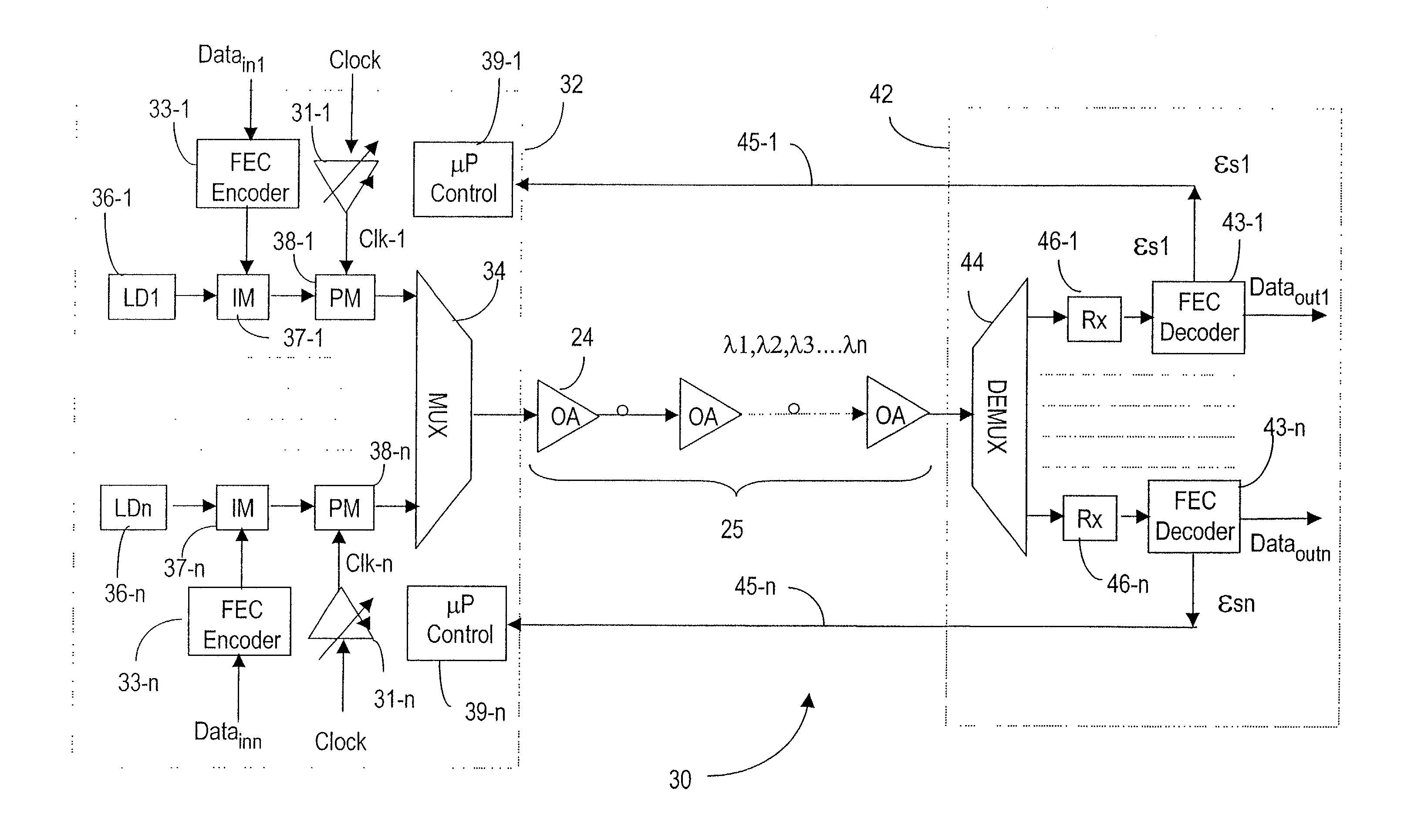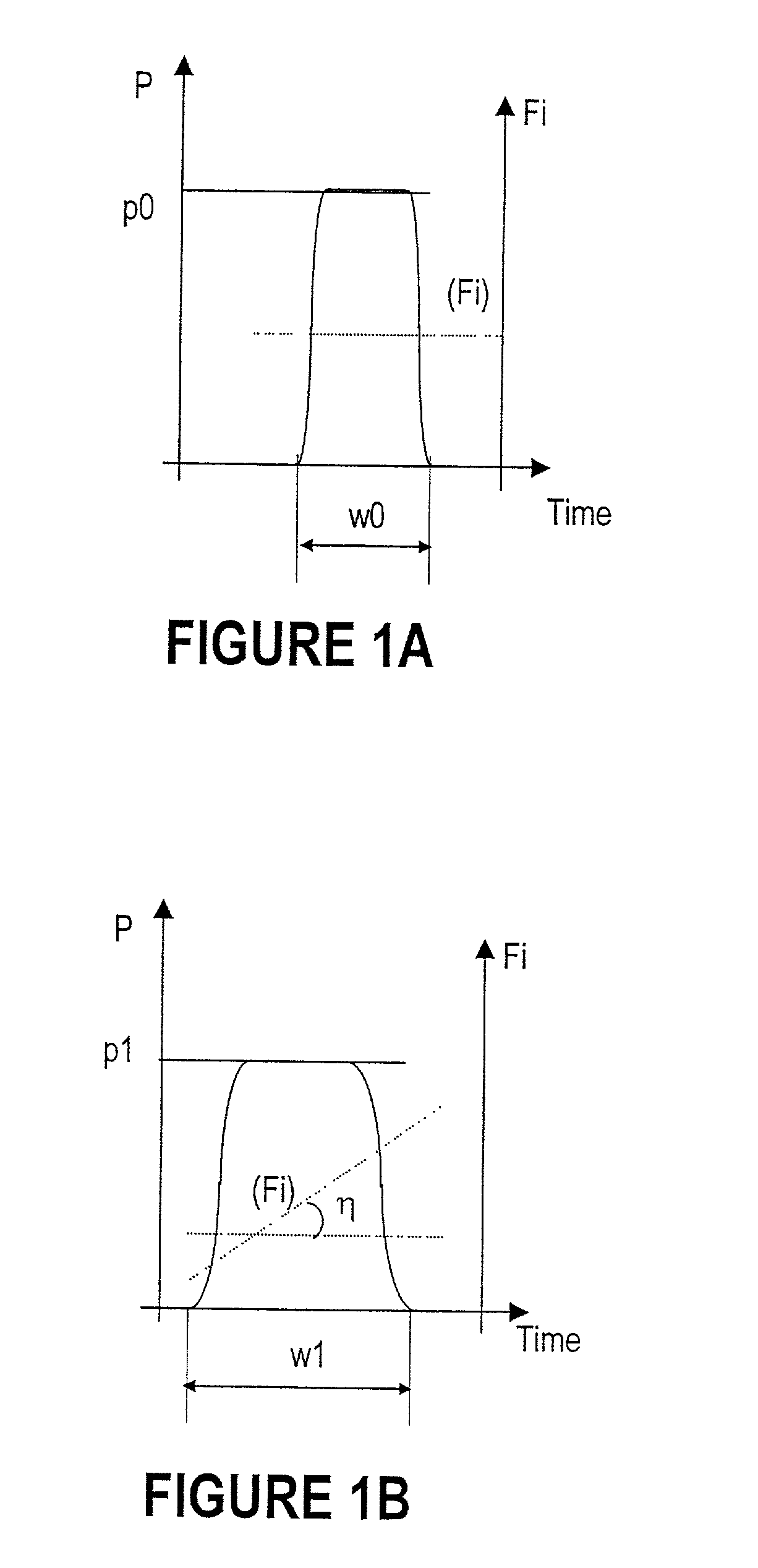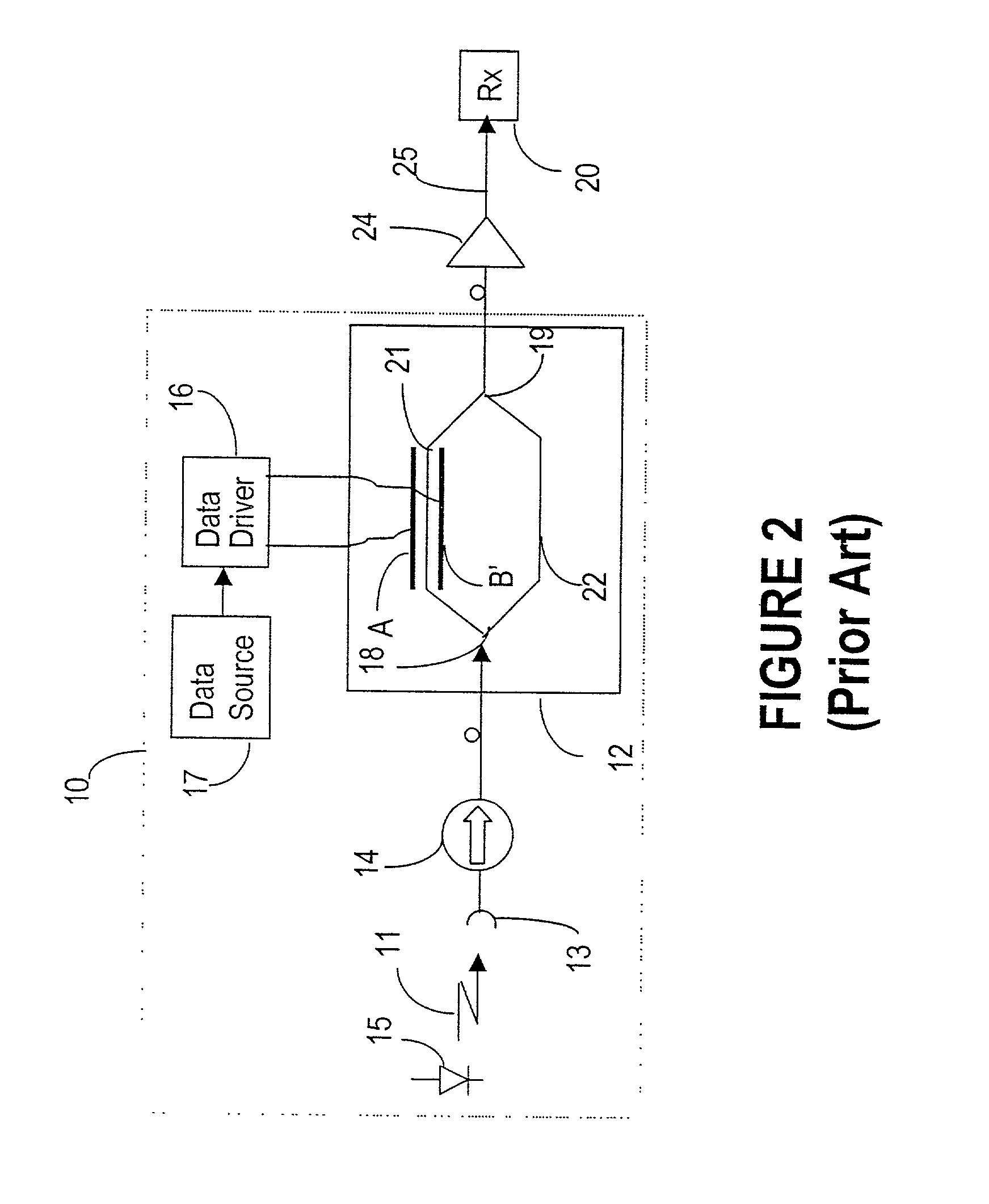Method of adaptive signal degradation compensation
a signal degradation and compensation technology, applied in electromagnetic transmission, electrical equipment, transmission, etc., can solve the problems of increasing the bit error rate (ber), inter symbol interference (isi), and the pulse is not recognized above the ambient noise level in the optical channel, so as to maximize the transmission distance, minimize the ber value, and optimize the shape of the receive end pulse
- Summary
- Abstract
- Description
- Claims
- Application Information
AI Technical Summary
Benefits of technology
Problems solved by technology
Method used
Image
Examples
Embodiment Construction
[0042]The following description is of a preferred embodiment by way of example only and without limitation to combination of features necessary for carrying the invention into effect.
[0043]The method according to the invention is based on prechirping of the signal phase at the transmitter (Tx) site for suppressing degradation of a transmission wave form due to linear and nonlinear effects in the fiber. Prechirping is a technique that can be performed by altering the phase of the optical signal, and implies imposing a controlled compensatory degradation, or induced phase prechirp. A parameter (C) as defined in EQ 2 is characteristic for the chirp associated with external modulators.
[0044]FIGS. 1A and 1B described next are intended to provide a better view of the field of the invention and the current state of the art.
[0045]FIG. 1A illustrates an optical pulse po sent without compensation over the fiber. The pulse has a width “wo” and a substantially constant instantaneous frequency (...
PUM
 Login to View More
Login to View More Abstract
Description
Claims
Application Information
 Login to View More
Login to View More - R&D
- Intellectual Property
- Life Sciences
- Materials
- Tech Scout
- Unparalleled Data Quality
- Higher Quality Content
- 60% Fewer Hallucinations
Browse by: Latest US Patents, China's latest patents, Technical Efficacy Thesaurus, Application Domain, Technology Topic, Popular Technical Reports.
© 2025 PatSnap. All rights reserved.Legal|Privacy policy|Modern Slavery Act Transparency Statement|Sitemap|About US| Contact US: help@patsnap.com



